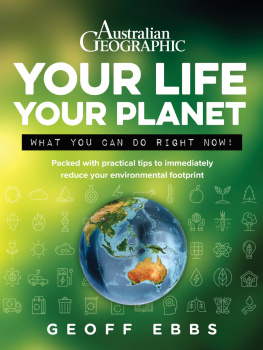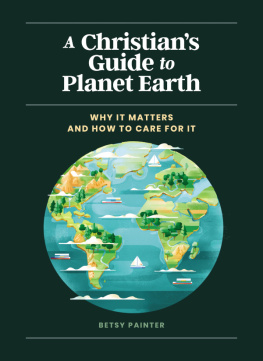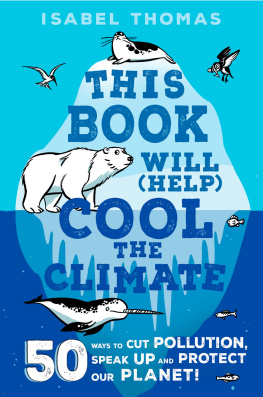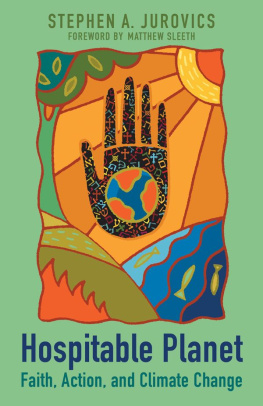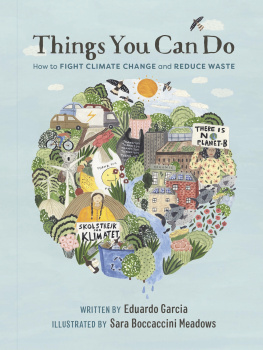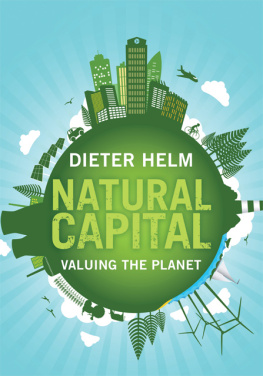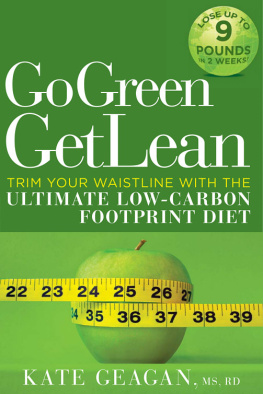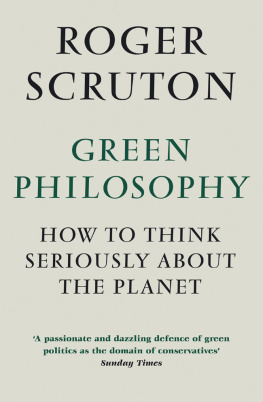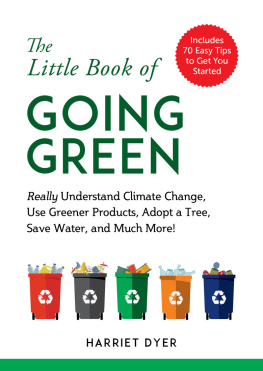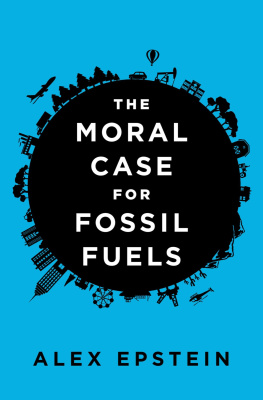Acknowledgements
A vibrant team of eco-warriors and communicators birthed this book.
Huge thanks go to Alette Nalder, queen of the reviewers, who collected comments and co-wrote large slabs from her tiny house while also running her sustainable cleaning business. To the team of reviewers, text wranglers and fact checkers: Marcela Ramirez, Wolfgang Kessler, Henrietta Ebbs, Tallulah Ebbs, Claire Tracey, Rhiaan Leckie, Lisa and Malcolm Mackenzie. Thanks for slaving away in a damp cave over winter for a few mouldy breadcrumbs as we sought the first glimpse of spring and a complete manuscript.
I cannot thank enough the experts who provided valuable input, new ideas and salient facts. Some of them feature prominently in this book and on the website, YLYP.news; some of them are mentioned in passing. Their knowledge and experience is broad and deep, and I have simplified and summarised it in ways they may not appreciate. All omissions and errors are mine so, if you know better, sympathise with them and save your ire for me.
Finally, the publishing teams at Ebono Institute, Woodslane Press and Australian Geographic who launched the project and provided the wherewithal to make it possible. Editor Maryanne Philips has worked alongside me for 35 years. Publisher Andrew Swaffers patience and diplomacy nursed us all through many dangerous shoals, designer Christine Schiedel made this book a thing of beauty, and impresario David Scott published my first book in 1993 and has believed in me ever since.
Without all of you, these would just be the scratchings of a life-long tech-nerd and environmentalist who dreamed of a gentler world but was never sure how to realise it.
Hopefully our combined effort will help you, dear Reader, take a step in that direction.
Gaia knows we need it.
DISCOVER AUSTRALIA ON FOOT WITH WOODSLANE PRESS AND AUSTRALIAN GEOGRAPHIC
Available from Australian Geographic and partner imprint Woodslane Press is a wide range of practical walking guides to cities and regions all over Australia. For more information go to: woodslane.com.au/promotion/walkguides or australiangeographic.com.au.
Sydneys Best Harbour & Coastal Walks
Sydneys Best Bush Park & City Walks
Great North Walk
Blue Mountains Best Bushwalks
Six Foot Track
Best Walks of the Illawarra
Best Walks of the Southern Highlands
Best Walks of the Shoalhaven
Canberras Best Bush, Park & City Walks
Walking & Cycling Canberras Centenary Trail
Melbournes Best River, Bay and Lakeside Walks
Best Walks East of Melbourne
Best Walks of the Great Ocean Road
Best Walks of the Gariwerd Grampians National Park
Best Walks of Victorias High Country
Best River & Alpine Walks around Mt Kosciuszko
Best Bush, Coast and Village Walks of South East Tasmania
Brisbanes Best Bush, Bay & City Walks
Best Village & Coastal Walks of the Sunshine Coast
Best Walks around Cairns & the Tablelands
Best Walks of the Red Centre
Best Walks of the Top End
Adelaides Best Bush, Coast & City Walks
Perths Best Bush, Coast & City Walks
ANTIKYTHERA
An ancient Greek analogue computer, made of brass, the Antikythera could display astronomical observations and calculate the dates of future Olympic games. It is properly described as a celestial calculator. The tips in this book represent the visual interface of the Antikythera. This section, by comparison, exposes the workings; the calculations behind the figures; the visualisations given throughout the book; the assumptions and sources behind the terms.
CHAPTER 01
LIVING ROOM
Baby, its wild outside. Nice to kick back in the cave, snuggle into the comforts of home and restore our souls. Unfortunately, some of the things that keep us comfortable do not contribute to the greater good. Heres why.
The problem
Back in the day, we burned wood to keep the cave warm in the neat fireplace we made using river rocks. That meant chopping down trees and ripping up the local creek bed. (Not to mention pumping carbon dioxide into the atmosphere.) The modern equivalent is reverse-cycle air-conditioning, a comfortable lounge suite, a large plasma screen and one smart digital assistant to rule them all.
Our comfort is costing the earth.

Heating has greater emissions than a ir-conditioning
GADGETS
The gadgets we use today are marvels of modern engineering. Problem is, they take a lot of rare resources and energy to make; they cant be easily repaired; and e-waste is pretty toxic, precisely because of all the rare elements that went into making them so wonderful.
ENERGY
Aside from the electricity that you pay for every quarter, there is an enormous infrastructure supporting your online connection. The servers that deliver your movies, social media, work meetings, directions, emails, phone calls and so on consume about three terawatts of electricity every year. That is one hundred times Australias total electricity consumption during summer afternoons.
FURNITURE
Lots of energy was spent making and delivering all the stuff that keeps our current caves comfy. Australias more than eight million households spend more than $10 billion on furniture each year. Only about one quarter of that is manufactured in Australia, so has to be shipped here. Cheap furniture lasts less than five years.
COMFORT AND CONVENIENCE
Thats the challenge, my friends. We make life easy and comfortable for ourselves at someone elses expense.
Lets fix it
Lets start with the no-brainers. You dont need to spend any money or make any eff ort to do the first two tips in this chapter but the benefits are immediate. They are not going to stop the world catching on fire, but youve just walked in the door. It makes sense to take a few baby steps to start with.
YOUR PERSONAL CARBON TARGET
The impact of these tips can be seen here by the holes they make in the Personal carbon target.
The target was introduced and described in detail in the introduction. The simplified version of it, shown opposite, is used throughout the book to visually show the impact of particular tips. The outer circle of the target represents 46kg per day or 17 tonnes per year, the per capita emissions of each and every Australian. You can read up on the details of that calculation in the Antikythera.
The line drawn around the bulls-eye is our personal carbon target of 5.4kg each day. We are trying to blow away pieces of the target by making holes in it with each tip. The inner black circle, the bulls eye of just under 3kg per day is typical of Tonga and other Pacific islands. That is provided for reference, just to remind us that one billion of the worlds population produces less carbon now than we are aiming to produce in the future.
The holes that have been blasted in this target represent the two tips in this section.
The lights in a typical Australian home are responsible for about 5% of electricity use. If we can save, say, one fifth of that use by turning off the lights we do not need, we reduce our carbon footprint by 60g each day. Its not a great big hole in the target, but its an easy win.
Turning down the heater is a much bigger deal. It saves over 600g every day, about the same as produced in total by the average citizen of sub-Saharan Africa.
1. An empty room does not need a light
This is not rocket science; its just one of those obvious things that most kids and many adults are too slack to pay attention to. Get real, guys. This one is obvious.
If you are not in the room, turn off the light. Those of us with older lighting systems are just burning energy for nothing. Only turn the lights on when you need them. If you are aware of the energy used by lighting, you are more likely to switch off standby devices and other energy wasters. It is important to take responsibility for your energy use.

